Low vision is a term for conditions that result in reduced sight and cannot entirely be corrected with eyeglasses, contact lenses, medicines or surgery. Several eye diseases or conditions can cause low vision and here we will discuss the four most common causes of low vision and their risk factors.
Macular Degeneration
Macular degeneration is a disorder that affects the retina, which is the light-sensitive tissue lining the inside of the eye. Within the retina, the area responsible for sharp central vision (called the macula) deteriorates, causing blurred vision. This can cause a blind spot in the central area of vision, which leads to low vision.
There are two types of macular degeneration – non-exudative (dry form) and exudative (wet form). The dry form usually progresses slowly, while the wet form causes more rapid and severe vision loss due to abnormal blood vessels developing under the macula and leak fluid and blood. The biggest risk factor for macular degeneration is age. Other risk factors include genetics, race, smoking, and high blood pressure.
Diabetic Retinopathy
Diabetic retinopathy is a diabetes complication that affects the eyes. High blood sugar levels cause damage to blood vessels in the retina. These blood vessels can swell and leak (called macular edema). Sometimes they close, stopping blood from passing through (called macular ischemia). At first, diabetic retinopathy may cause no symptoms or only mild vision problems. However, over time, it can severely damage the retina, leading to low vision. Anyone who has diabetes can develop diabetic retinopathy. The risk increases for those who have had diabetes longer, as well as those with poor control of blood sugar levels, high blood pressure or cholesterol as well as those who smoke.
Cataracts
A cataract is a clouding of the lens in the eye that affects vision. This clouding can block the light from reaching the retina at the back of the eye, resulting in a general loss of vision. In some cases, a cataract can be surgically removed. Cataract surgery has a high success rate in otherwise healthy eyes but it is not always possible for people who also have other eye diseases. While the risk of cataract increases as you get older, other risk factors include diabetes, smoking, alcohol use, and prolonged exposure to ultraviolet sunlight.
Glaucoma
Glaucoma is a disease that damages your eye’s optic nerve. Most commonly, this occurs when fluid builds up in the front part of your eye which increases the pressure in your eye, damaging the optic nerve. There are four types of glaucoma: open-angle, normal tension, angle-closure, and secondary.
There are many risk factors for glaucoma, but those over 40 who have a family history of glaucoma should always have regular eye exams to check for glaucoma. In addition, you could be at an increased risk if your eye doctor has noted that you have high eye pressure, are farsighted or nearsighted, have thin corneas, thinning of the optic nerve, or have had an eye injury. Finally, certain health problems can cause glaucoma, such as diabetes, migraines, high blood pressure, or poor blood circulation.
How to Prevent Low Vision from These Diseases
Even though age and genetics play a part, you may have noticed some common risk factors – diabetes, smoking, and high blood pressure, which are all within your control.
Here are the most important steps you can take to reduce your risk of low vision from macular degeneration, diabetic retinopathy, cataracts, and glaucoma.
Be aware of your family's health history
Get regular physicals
Move your body
Eat a healthy diet
Don't smoke
Check out changes in vision with your eye doctor
Protect your eyes from the sun
Get your eyes checked at least every two years
By understanding the diseases that cause low vision, you can take steps now to reduce modifiable risk factors or get an early diagnosis to preserve your eyesight.






